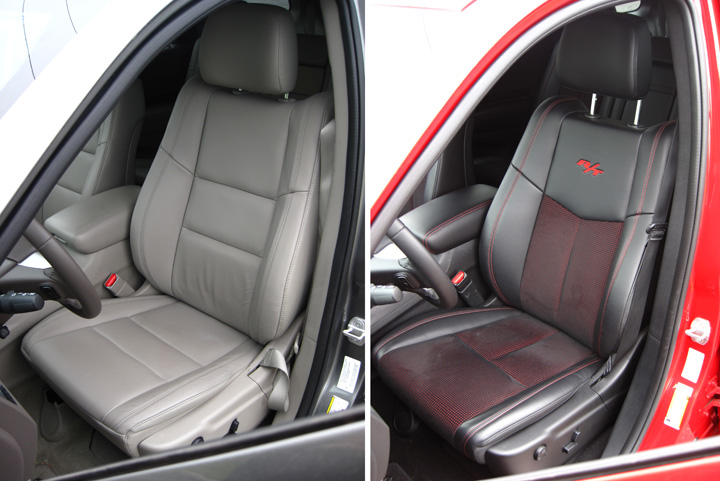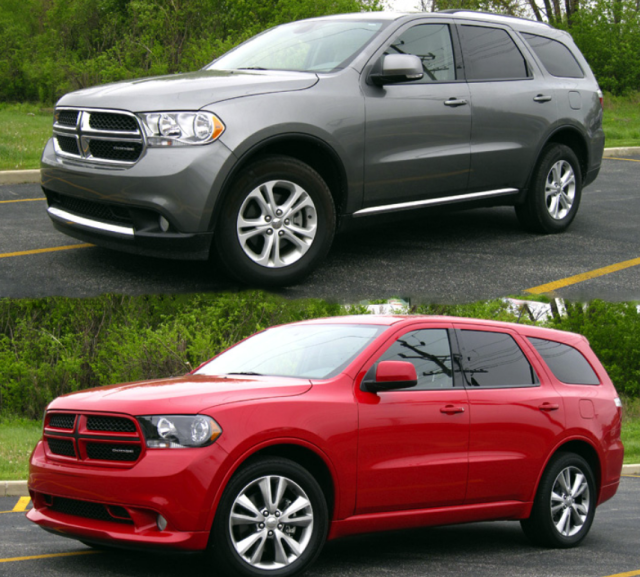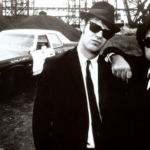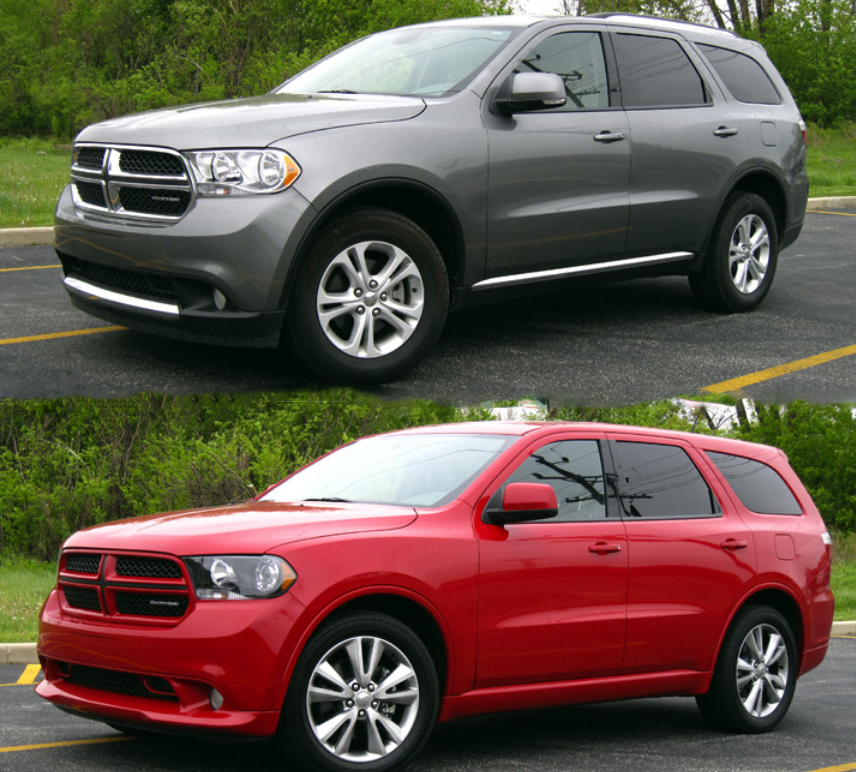
Last week, a “Redline Pearl” all-wheel-drive Dodge Durango R/T joined our short-term test car fleet. Since we also have an AWD Durango Crew in our long-term test fleet, we figured an impromptu photo shoot was in order.
The side-by-side comparison makes for an interesting case study in how an auto manufacturer can add a little high-performance attitude to a mainstream vehicle with a few simple (and cheap to produce) styling touches. To some, the Durango R/T may look a bit too puffed-chest pretentious; to others, it may be just right.
In this case, the difference in appearance between the mainstream variant and its hot-rod sibling is an accurate barometer of the difference in their driving character. The biggest difference is under the hood; the R/T replaces the Crew’s 290-hp 3.6-liter V6 with a 360-hp 5.7-liter Hemi V8. Naturally, the Hemi is gutsier, and it feels gutsier still because its low-restriction exhaust system makes the R/T sound like a nasty muscle car. To some, the aggressive exhaust burble will grow tiresome; to others, it’s pure music.
The Hemi’s most obvious shortcoming is fuel economy. We’re averaging 18.3 mpg in our long-term Crew; not outstanding, but not bad for an SUV of this size. We couldn’t even manage 14 mpg in the R/T. It’s also worth noting that Dodge recommends pricier mid-grade 89-octane gas for the Hemi, while the V6 uses regular or E85.
The other significant difference is ride quality. The R/T has a sport suspension and 20-inch wheels in place of the Crew’s 18s. So, it corners a bit more crisply but rides a lot more harshly.
The sticker prices of these two are within spitting distance of each other: $39,020 for our Crew long-termer, and $39,240 for the R/T. The R/T is about $2,300 more to start, but our Crew has a leather interior and a fancier navigation system—two options that close the price gap.
To some, the R/T’s extra swagger and performance are worth its penalties. To others (including most of us at Consumer Guide), not so much.
Test Drive: 2015 Dodge Challenger R/T Scat Pack vs. SRT 392
Durango: Crew vs. R/T
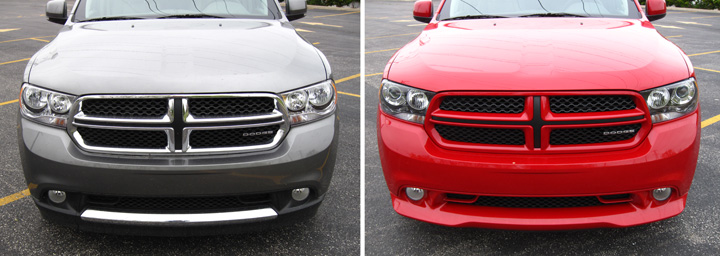
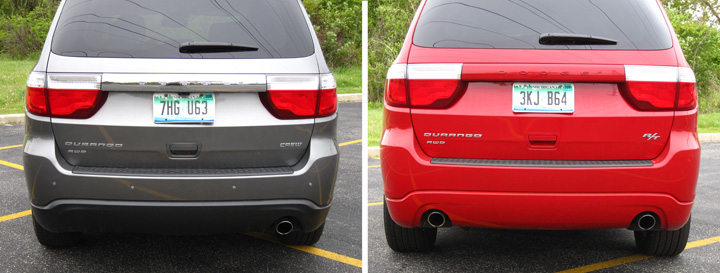
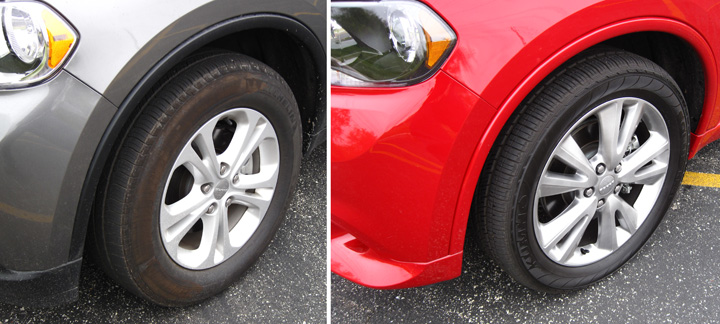
1985 190E vs. 2015 CLA: How Lexus Leavened the Price of Base Benzes
